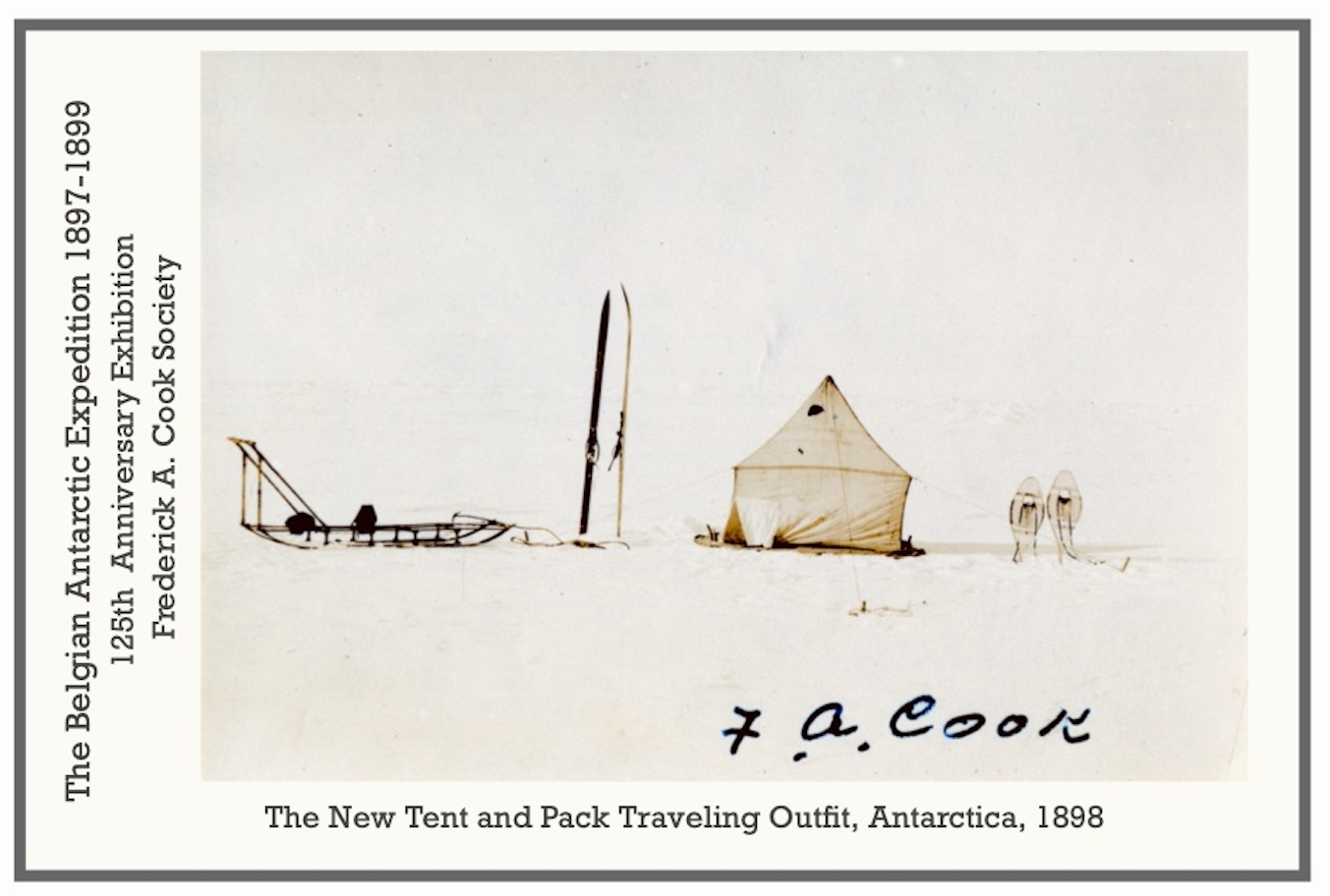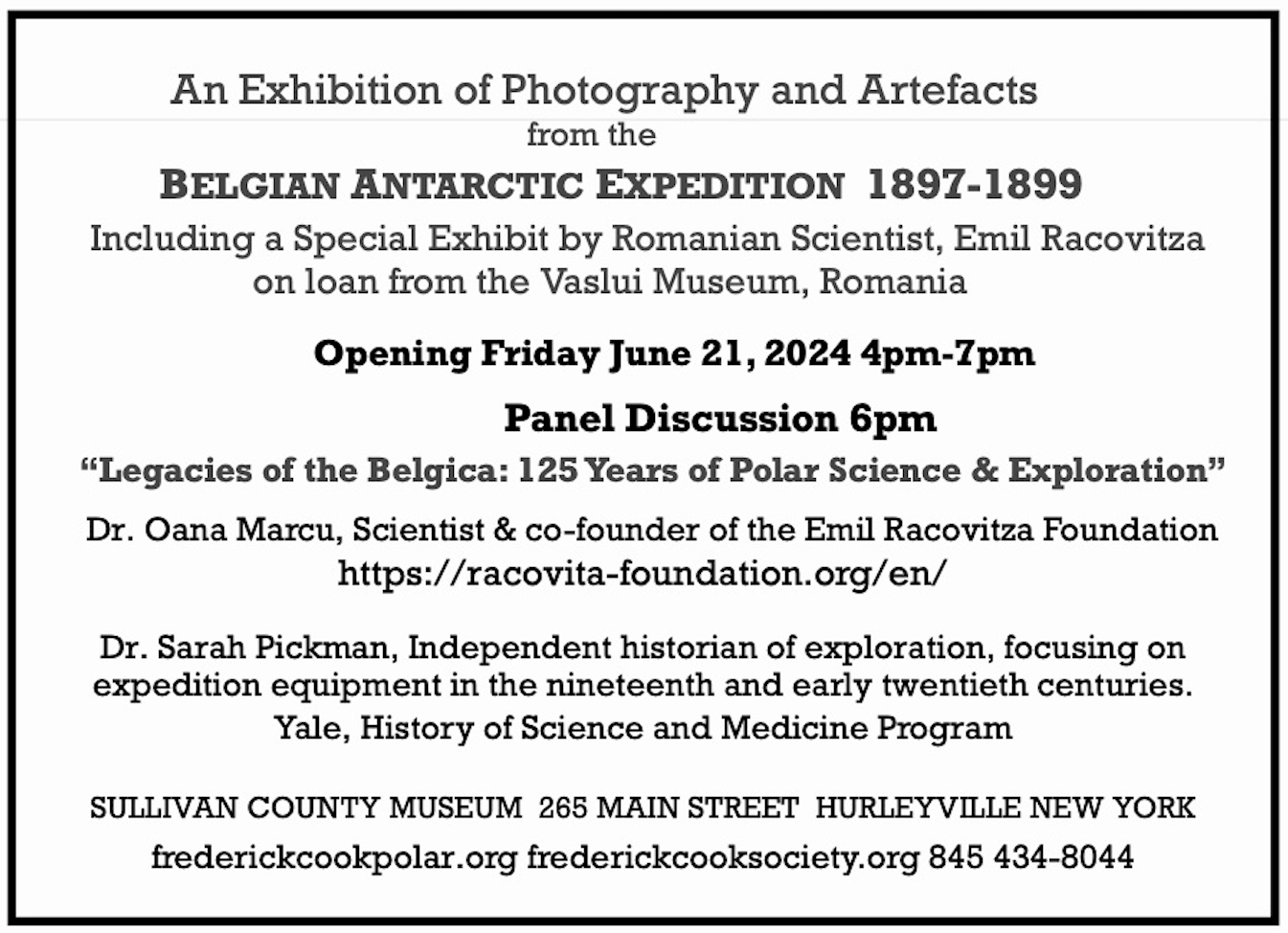


At the end of the 19th century, Antarctica was the last uncharted place on earth. A 29 year old Belgian naval officer, Adrien Victor Joseph Baron de Gerlache wanted to change that. On August 16th, 1897 the Belgica set sail from Antwerp. Nineteen young men from six different nations on a 3-mast wooden ship were to chart a new path into the frozen unknown.
Dr. Frederick Cook, the Hortonville native who would go on to become one of the world’s greatest adventurers, was a last minute addition to the crew.
The ship was a retrofitted whaler with three fully equipped science laboratories and a darkroom for photography.
Originally conceived as one of the first purely scientific expeditions to Antarctica, the voyage would also come to represent one of the greatest victories of the human mind and spirit over the dominion and powers of nature. No poleward expedition, before or since, brought back a greater wealth of scientific data or cut a larger gap from the unknown.
In celebration of the 125th anniversary of the Belgian Antarctic Expedition, The Frederick Cook Society will present a special exhibition of drawings and photographs by the Romanian scientist, Emil Racovitza (1868 –1947). Racovitza was one of the scientists selected to be part of the Belgica’s international crew. He was also a talented artist who produced numerous sketches and photographs during the expedition. Later in his career as a speleologist, Racovitza established in Romania the first Speleological Institute in the world, and explored over 1,400 caves in France, Spain, Algeria, Italy, and Slovenia. He served for four years as President of the Romanian Academy, and went on to become one of Romania’s most beloved promoters of the Natural Sciences.
The Racovitza collection is on generous loan from the Stephan cel Mare Museum, in Vaslui, Romania.
In addition to the Racovitza collection, the exhibition will include one of the largest exhibitions of photographs from the Belgica expedition ever assembled. Five of the nineteen crew members had cameras, including Dr. Frederick Cook.
An original sled taken to Antarctica on the Belgica will also be on display. Built by Dr. Cook and his brother Theodore, this sled has the distinction of being used by both Cook and South Pole conqueror, Roald Amundsen. Amundsen was 1st Mate on the Belgica and became Cook’s lifelong friend during the expedition. The two are often jointly credited with saving the ship.
For their contributions the Cook Society gratefully acknowledges the Romanian Academy Library Cluj-Napoca Branch, the Emil G. Racoviță Foundation For Science and Exploration in Extreme Environments, the Amundsen House in Norway, the MAS Museum in Antwerp, Patrick DeDeckker, Professor Emeritus of the Australian National University, and Laura Kissels, Polar Curator of the Byrd Polar and Climate Research Center, Ohio State University.
Please join us for the opening reception, Friday, June 21st, from 4-7pm.
A panel discussion entitled “Legacies of the Belgica: 125 Years of Polar Science and Exploration” will begin at 6pm. Speakers include Dr. Oana Marcu, co-founder of the Emil G. Racoviță Foundation, and Dr. Sarah Pickman, an independent historian of exploration, whose work focuses on equipment for expeditions in the nineteenth and early twentieth century. She is a graduate of the Yale, History of Science and Medicine Program.
The Sullivan County Museum is located at 265 Main Street, Hurleyville, New York. For more information call 845 434-8044, or visit the Cook Society website.
